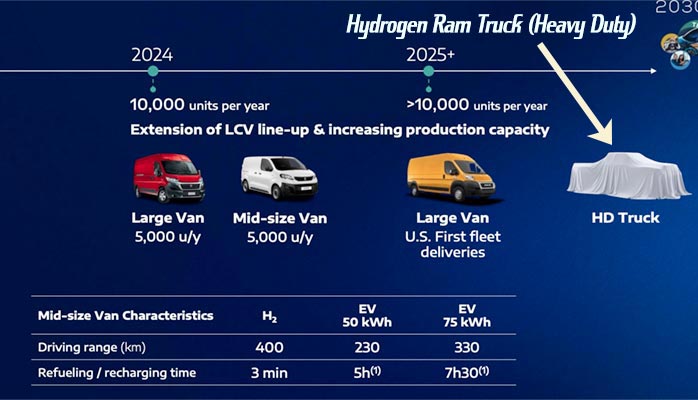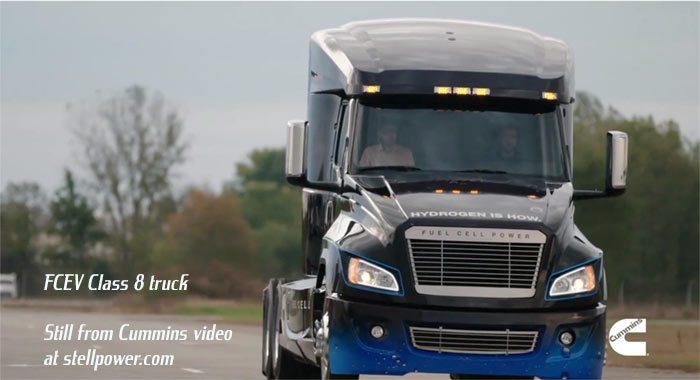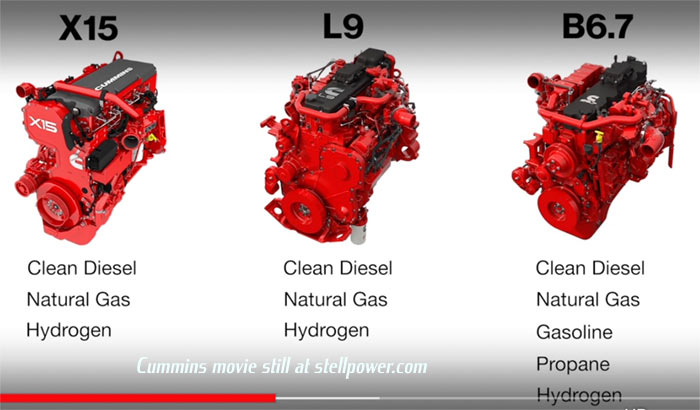Hydrogen power continues to attract investments by companies around the world; the latest announcement comes from Stellantis, which is able to make hydrogen fuel cell and electric vans with the same basic bodies. The new announcement comes in 2024, as Stellantis has predicted.

Stellantis has started industrial scale production of hydrogen fuel cell vans for its large-van lineup. The company already produced hydrogen mid-size vans. The range for the two vans is 400 km (midsize) and 500 km (large).
The midsize hydrogen vans are made in Hordain, France; the large ones in Gliwice, Poland. The company also makes battery-electric versions. The hydrogen vans will be sold under eight different names: Citroën ë-Jumpy and ë-Jumper, Fiat E-Scudo and E-Ducato, Opel Vivaro and Movano, and Peugeot E-Expert and E-Boxer.
The main advantage of hydrogen fuel cells is that they can drop in and replace batteries, but can be refilled in five minutes. Hydrogen also burns far cleaner than gasoline or diesel fuel.

The main criticisms of hydrogen include some safety concerns, which do not seem to be validated by on-the-road experience so far, and issues of how the hydrogen is produced. “Dirty” hydrogen is mostly made from natural gas (it may also come from coal or other fossil fuels or from biomass), and takes a good deal of energy to isolate.
Hydrogen can also be made from electrolysis, which takes a good deal of energy; but “green hydrogen” can still be made this way if the energy comes from otherwise unused solar, wind turbine, or other renewable sources (the overall goal to reduce carbon is overproduction of solar and wind energy most of the time to avoid the need for peaking plants; this overproduction could be directed towards hydrogen as well as energy storage. There are also times more wind or solar is created in one region than the grid can handle; the excess could be diverted to electrolysis).
There are also process which use sunlight to produce hydrogen using bacteria and algae, or using solar energy with special semiconductors to split water. Yet other methods under study include microbial biomass and photobiological methods.

The U.S. Department of Energy is trying to slash the price of hydrogen to $2/kg by 2026 and to $1/kg by 2031, without adding carbon to the atmosphere; this would be a major drop. Ram has already announced that it plans for hydrogen to be its eventual zero-emissions solution for heavy duty trucks, rather than batteries. Cummins, which provides Ram with its diesels, is working on making hydrogen versions of several current engines and has a partnership with truck stop operator Love’s to add hydrogen filling stations to truck stops across the country.